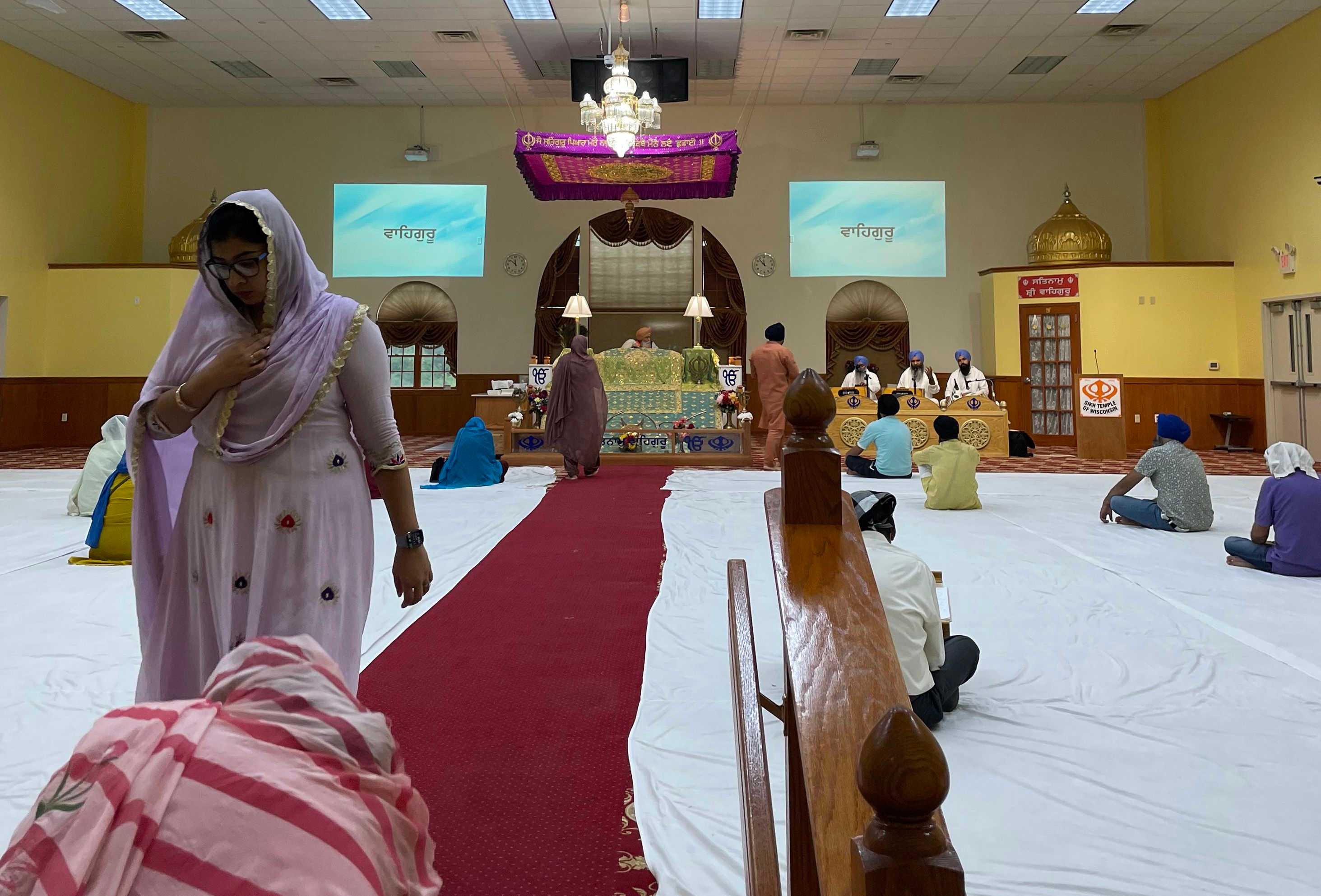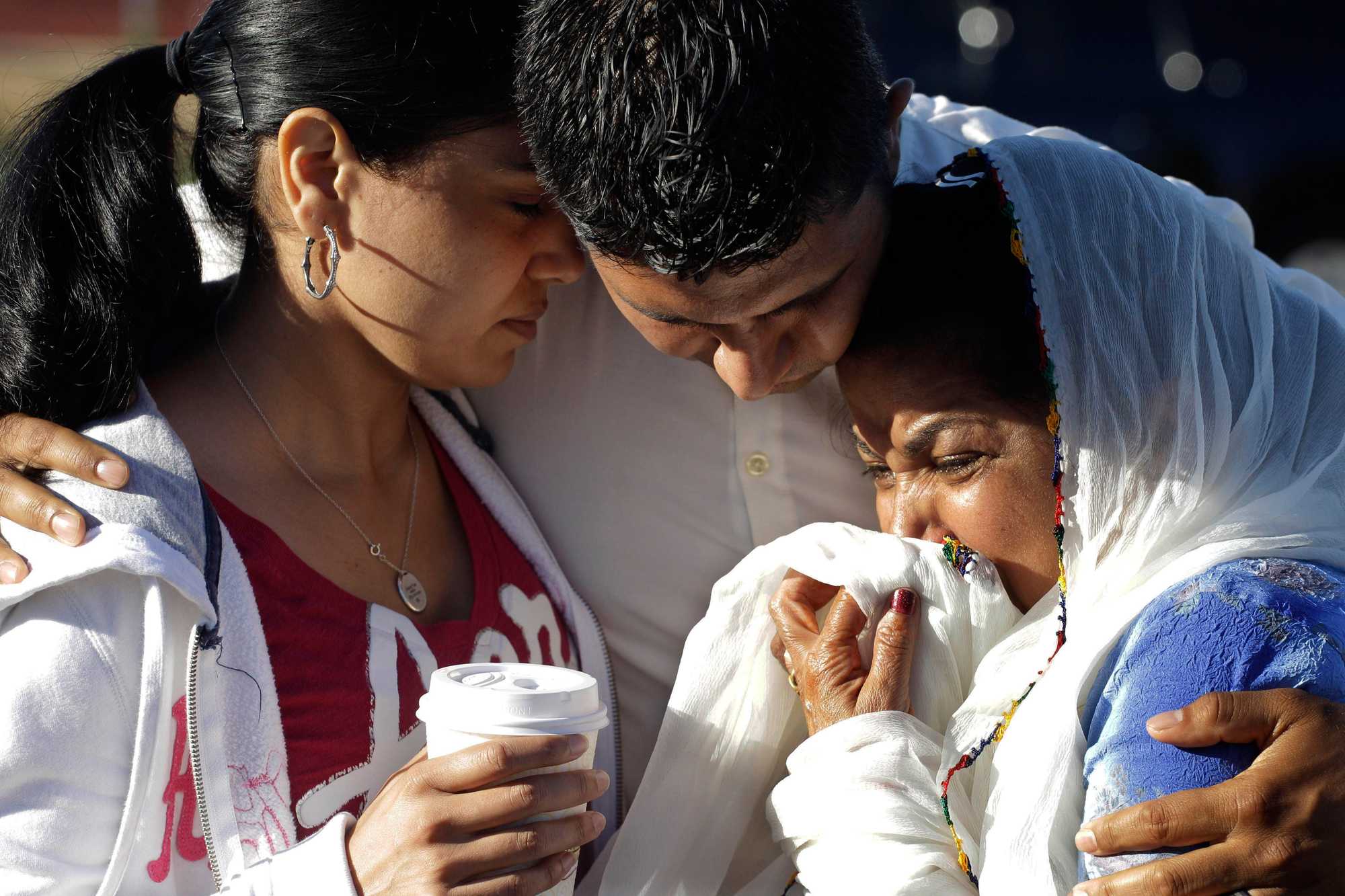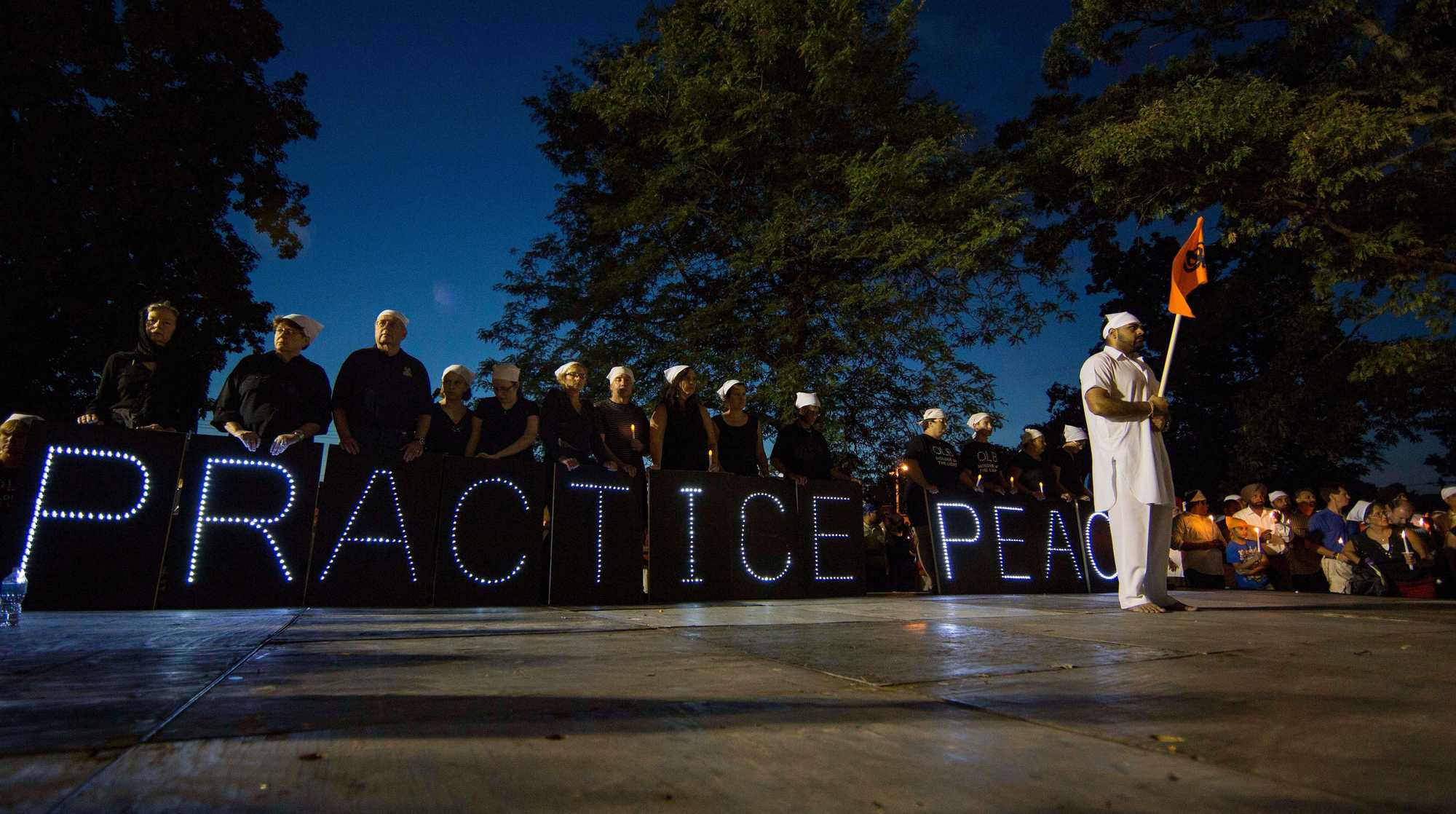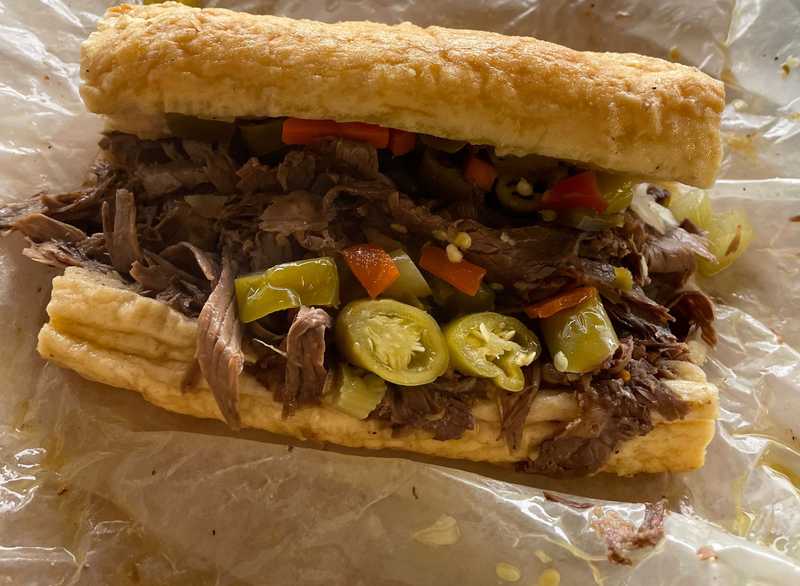Boston team
Oct. 31, 2022
I visited a Sikh temple in Wisconsin, still scarred by an attack born of hate

OAK CREEK, Wisc. — On a September Sunday, I walked into the Sikh temple at 10:31 a.m., eerily and unintentionally close to the time the gunman arrived in 2012.
He had stalked the temple in what I imagine was a rage — white skin and cold hands holding a 9mm handgun, killing six congregants and injuring four others. One man died from his wounds eight years later. People hid inside the bathrooms and closets I now walked by. They barricaded themselves in the prayer hall. Witnesses say the shooter first moved toward the kitchen, where metal trays of food sit open and free to all.
When I visited in September, I first saw a 4-year-old boy run out of the kitchen alone with a tray of sweet jalebi and gulab jamun. A group of grandmas gossiped at a table to my left. A mother chastised her daughter in the shadowed corner where worshipers remove their shoes.
Everything was normal, even peaceful.
All I could think about was violence.

The murderer, an avowed white supremacist, did not live to see this moment. Ten years ago, after shooting nearly a dozen people, he shot himself. During his life, I assume he pondered hate and brownness and American idealism. And the man must have known the terror he would inflict on people like me.
On the day of the attack, one of the deadliest mass shootings at an American house of worship, I was 11, living in my suburban Chicago home 99 miles away. I was probably reading or pushing oranges through our ancient juicer for breakfast. I have fragmented memories of the news breaking on television, bits and pieces about the SWAT team and the victims: “Satwant Kaleka, Paramjit Kaur, Ranjit Singh . . . ” and on and on.
It was the first time I realized — truly and fully — that my skin color determined how I am perceived in this country, and that I could be the victim of a hate crime myself. Standing at the site of the shooting a decade later, I am resigned that I will never be allowed to forget that fact.
Recent stories from the Boston team
Neither will the temple, a gurdwara, which bears scars of the tragedy. A laminated sign on the front door reminds congregants that no firearms are allowed inside and that the doors lock sharply at 9 p.m. During Sunday service, a security guard stands in the vestibule, warily eyeing all who enter.
American hate crimes have escalated during my lifetime; the number of hate groups is growing. In the prayer hall, I mourn the 2001 murder of Balbir Singh Sodhi, a Sikh gas station owner, and the Sikh workers killed by a co-worker at an Indianapolis FedEx facility 20 years later. I cry.
I try to soothe myself by taking one of the hymns as a sign that even violence, as painful as it is to consider, could be a mysterious materialization of God’s will: “Some, by his command, are merged with him,” the priests sing. “Others, by his command, are destroyed.”
Suddenly, I’m reminded of my father, who always told me you walk to your death — that you wake up one morning, maybe even get dressed, only to arrive at the place where your heart stops beating.
I’ve always understood this as a teaching in courage and fearlessness. I realize now it’s also a Sikh ideal, one to strive for in spite of a world of suffering and because of it.
We pray for “Chardi Kala”: An eternal mental state of resilience, optimism, and joy.

Join the discussion. Comment on this story.
Credits
- Reporters: Julian Benbow, Diti Kohli, Hanna Krueger, Emma Platoff, Annalisa Quinn, Jenna Russell, Mark Shanahan, Lissandra Villa Huerta
- Photographers: Erin Clark, Pat Greenhouse, Jessica Rinaldi, and Craig F. Walker
- Editor: Francis Storrs
- Managing editor: Stacey Myers
- Photo editors: William Greene and Leanne Burden Seidel
- Video editor: Anush Elbakyan
- Digital editor: Christina Prignano
- Design: Ryan Huddle
- Development: John Hancock
- Copy editors: Carrie Simonelli, Michael Bailey, Marie Piard, and Ashlee Korlach
- Homepage strategy: Leah Becerra
- Audience engagement: Lauren Booker, Heather Ciras, Sadie Layher, Maddie Mortell, and Devin Smith
- Newsletter: LaDonna LaGuerre
- Quality assurance: Nalini Dokula
- Additional research: Chelsea Henderson and Jeremiah Manion
© 2022 Boston Globe Media Partners, LLC


